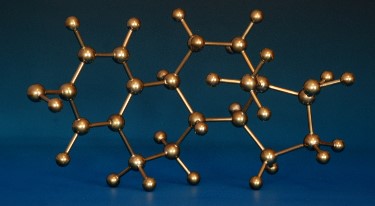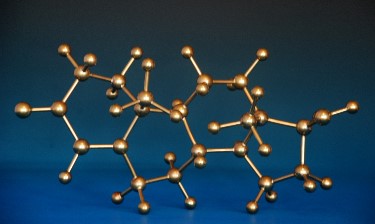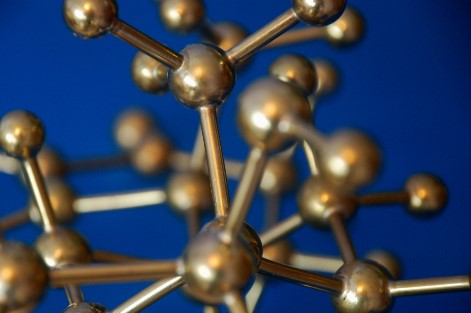
Most of our models comprise balls that are linked through single bonds, as that accentuates the spacial relationship between the atoms in the crystal or the molecule.
Sometimes, though, the multiple bonds in the structure are important and need to be explicitly shown in the in model..
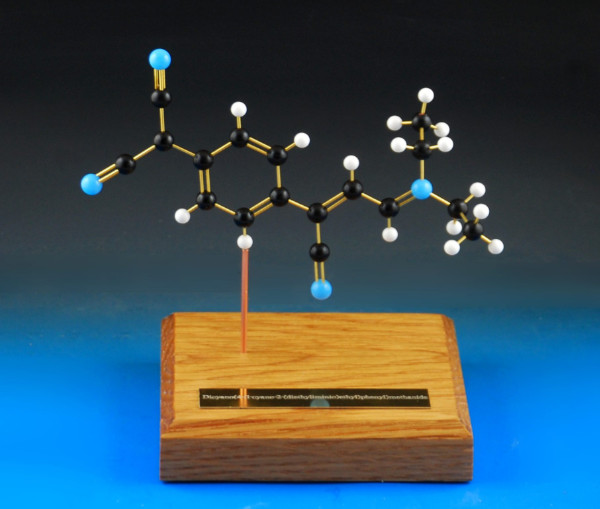
Different shades of brass, patination, copper plating can all be used to create beautiful molecular models that still differntiate between different atom types. The model above was made with different sizes and shades of brass ball, along with black and silver patination for the carbon and hydrogen atoms. Mounted on a granite base, it is a stunningly beautiful model,
Brass is one of the better metals for us to work with as it is relatively cheap and machinable, but we have also made models in aluminium, copper, bronze, anodised titanium, silver, and other metals, but we are not restricted to these materials.
An obvious extension of a model made with a single metal is one made with different metals, each with distinct colours - brass, copper and aluminium are so obviously different, whilst being relatively cheap and machinable, that they are particularly useful for such models. Nor do the balls have to be the same size - we can mix balls of different materials and sizes to get particularly attractive models, as shown in the model of GaN below, made with 7mm brass balls and 10mm aluminium balls.
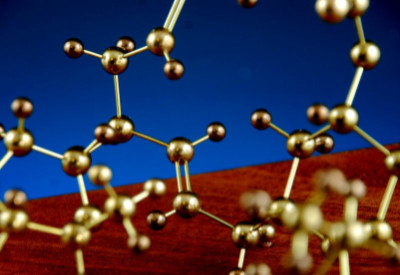
Model of the GaN structure, made with brass and aluminium balls, and green anodised aluminium rods, on a granite base
Anodising metals for colour in molecular models
Aluminium can be colour anodised to give balls of different colours - indeed, almost any colour - and titanium balls can be anodised to a wide range of colours (although Ti is not surprisingly hard to machine). Using colour anodised aluminium rods, we can make the bonds any colour you want, too - if you look carefully at the model of GaN above, you will notice that the aluminium bonds have been colour anodised to a green colour.
Models made in other metals
We can make molecular models or crystal structure models in almost any other metal you would like (but please don't bother asking for models made with toxic, radioactive or reactive metals such as beryllium, potassium or uranium).
The issue, though, tends to be the availability of balls in less common metals. As with anything in life, almost anything can be purchased if you have the funds, and there are ball manufacturers out there who are are prepared to make balls from almost any material. But, that comes at a price - sometimes a very significant one - so you may need deep pockets. That said, we are open to any reasonable request, so don't hesitate to contact us about that model of rhodocene model, made with rhodium balls, that you always wanted. Contact us for more details and to discuss your requirements.
